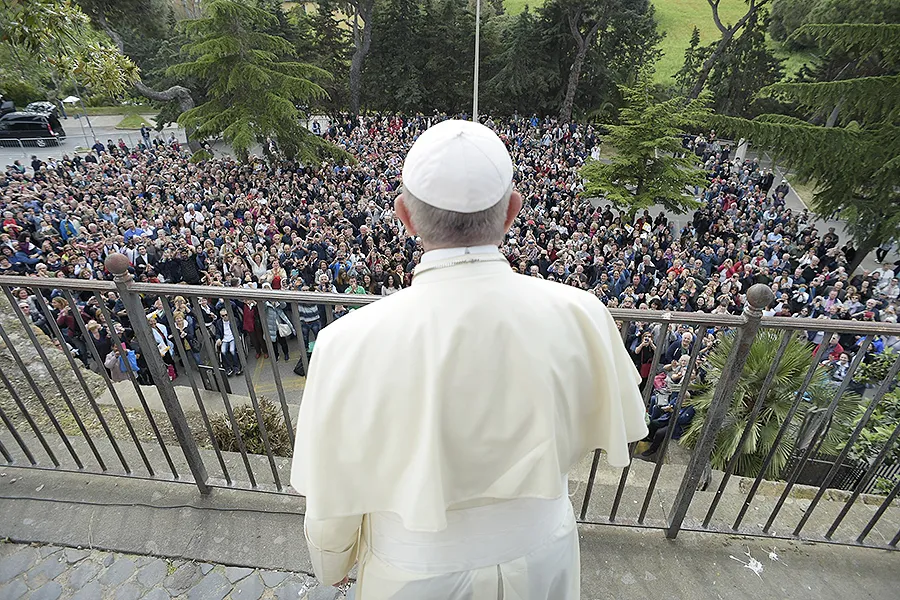
Vatican City, May 1, 2018 / 03:06 pm (CNA/EWTN News).- Pope Francis made a rosary pilgrimage May 1 to invoke intercession from the Blessed Virgin Mary for peace in Syria.
The pope’s pilgrimage was to the Shrine of Our Lady of Divine Love in Rome, where he prayed the rosary along with Catholic visiting the shrine.
On Sunday the pope announced that he would be making the pilgrimage to “recite the rosary, praying especially for peace in Syria and throughout the world.”
He also invited Catholics to join him on the pilgrimage spiritually, and to pray the Rosary for peace throughout the month of May.
Pope Francis has been a vocal advocate for peace in the Middle East throughout his pontificate. During a Mass in St. Peter’s Square April 8 he condemned the chemical attack in Syria, saying that “nothing can justify” the use of chemical weapons on “defenseless people and populations.”
Earlier in April, during his Easter Urbi et Orbi message, he also prayed for Syria, pleading for “fruits of peace upon the entire world, beginning with the beloved and long-suffering land of Syria, whose people are worn down by an apparently endless war.”
He also prayed that during the Easter season, Christ would “illuminate” the consciences of political and military leaders, “so that a swift end may be brought to the carnage in course.”
Tuesday, the pope prayed the rosary before the image of Our Lady of the Miracle at the Shrine of Our Lady of Divine Love, before greeting the 24 residents of a retirement home.
He also greeted mothers and children living in a house on sanctuary property, and run by the Congregation of the Daughters of Divine Love.
The pope then greeted Catholics gathered outside the church, gave his blessing, and led the ‘Hail Mary.’ The visit to the popular Roman shrine was Francis’ first.
Over the years, various popes have visited the shrine to ask for the intercession of the Blessed Virgin Mary, including Pope Pius XII, who visited to pray for Mary’s protection of the city of Rome during the Second World War.
On June 11, 1944, surrounded by a large crowd, Pius XII gave the image the title of “Salvatrice dell’Urbe,” meaning “Deliverer of the City.”
Pope Benedict XVI, who visited the shrine on May 1, 2006, said it was “a source of comfort” to recite the Rosary in the Shrine of Our Lady of Divine Love, “in which the devoted affection for the Virgin Mary is expressed, rooted in the soul and in the history of the people of Rome.”
“A particular joy,” he continued, “comes from the thought of renewing the experience of my beloved Predecessor John Paul II, who, exactly 27 years ago, on the first day of May 1979, made his first visit as a Pontiff to this Shrine.”
The extensive shrine property consists of several buildings, including an old church, which was built in 1745, and a new, larger church, which was added by St. John Paul II in 1999.
According to tradition, the old church was built on the site of a miraculous healing, which occurred in 1740 when a man prayed for the intercession of the Blessed Virgin Mary after being attacked and gravely wounded by dogs.
It had been the site of a castle with a boundary wall and towers in the 13th century, which by the 19th century had largely fallen into ruin. One tower remains today, however, which contains a medieval fresco of the Madonna and Child.
If you value the news and views Catholic World Report provides, please consider donating to support our efforts. Your contribution will help us continue to make CWR available to all readers worldwide for free, without a subscription. Thank you for your generosity!
Click here for more information on donating to CWR. Click here to sign up for our newsletter.



Leave a Reply